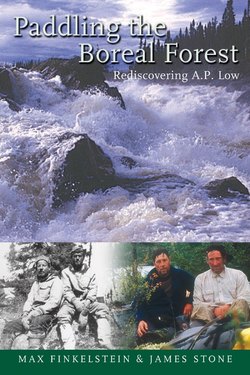Читать книгу Paddling the Boreal Forest - Stone James Madison - Страница 7
На сайте Литреса книга снята с продажи.
ОглавлениеForeword
by Becky Mason
As you read this book you will be rewarded with a greater understanding of the majesty and magnitude of the Canadian boreal forest as well as a feeling of admiration and respect for A.P. Low and other travellers past and present who have journeyed through it. Max Finkelstein and Jim Stone's modern day retracing of some of the routes done by Low in 1885 gives us a slice of the boreal forest at its most rugged and remote as well as a sense of a land steeped in the history of lost routes and forgotten men.
To know Max Finkelstein is to know a gentle giant. As a paddler he is powerful, indomitable and determined, as a hockey player he is fierce and passionate, and as a person Max is soft-spoken, humble and generous. Co-author Jim Stone, a giant in his own right, is methodical, philosophical, indefatigable and a tenacious researcher. Most of these words could very well have been used a century before to describe the character and traits of A.P. Low, the elusive and reluctant hero of this book. He was indeed a hard fellow to track down. Jim spent countless hours trying to find any clues or scraps of personal information that could lead to a better understanding of their protagonist but sometimes he admittedly came up short. So to gain some more insight into their man, Jim and Max researched A.P. Low's thousands of miles of canoe expeditions and plotted, as a pilgrimage of sorts, a trip that would take them on a journey of discovery into the heart of the boreal forest.
It's fascinating to read about how busy it was in Northern Quebec 100 years ago. Of course Natives had been there for thousands of years but newly arrived Europeans were just getting serious about exploring and exploiting the “unknown” territories of Canada. This is where A.P. Low really made his mark. We learn of his passion for exploring, mapping and noting any valuable natural assets of the land. And then we are made aware of what's currently happening to the boreal forest and how many of the areas that he visited by canoe are the same ones that are under threat from development or already developed and unrecognizable. Some of those places are now underwater due to dams, and even more alarming, some of those rivers have had their flows reversed so they might feed the same insatiable hydroelectric dams. In a way it's chilling to think that nowadays these places are rarely travelled and yet they face far greater and more monumental threats than ever before. Hydroelectric development is but one. I have travelled through some areas of Canada's boreal forest and I can tell you that forestry, mining, global warming and pollution also threaten this huge ecosystem. The boreal forest is crucial for regulating the climate, providing clean air and water, and supporting a complete range of native species in connected ecosystems. Over 90% of Canada's boreal area is public land so perhaps we all should have some small say in how or if it is developed. Max and Jim certainly highlight the tragedy of progress with their heartbreaking descriptions of the mega projects underway in James Bay.
There are many other parallels running through this book. Both Jim and Max and A.P. were constantly drenched to the skin from the constant rain and from sloughing through the wet spruce and moss covered forest for most of their trips. They were both plagued by the ubiquitous and infamous bugs, samples of which must surely be found squashed on each page of their respective journals. They were both following old trails that had been used for centuries. Using A.P.'s old photographs as reference, the authors try to find his long cold trail. There were times where I held my breath wondering if our modern adventures would suffer the same fate as others who had tried to follow these convoluted routes. But just like their hero, Max and Jim come through in the end, using their noggins, outdoor skills and dogged determination.
But this book is not just a tale of a great adventure; it's much more than that. It is a window to the past where we can glimpse obscure or lost paths, contemplate amazing achievements and get a true sense of what it was like to travel by canoe through the unmapped and unknown boreal forest. To retrace these routes, I think, is to look for connections, and to thrill to the feeling of being alive. In our modern times we measure our deeds against our heroes, and it is a tribute to both Jim and Max, and to A.P. Low that, although their goals were different, their accomplishments are impressive indeed.
So, dear reader, turn the page and discover the paths blazed by a young A.P. Low obsessed with mapping all of Canada's north, forsaking wife and family and most of his colleagues, and ploughing through bureaucratic red tape to get the job done. Admire him for his unique take on using the First Nations' strength and knowledge. And wonder at his mysterious slide into obscurity at the age of 47. Only men of steel could follow in A.P. Low's footsteps, and Jim and Max, our indomitable wilderness adventurers, are up to the task.
Becky Mason
July 30, 2004
